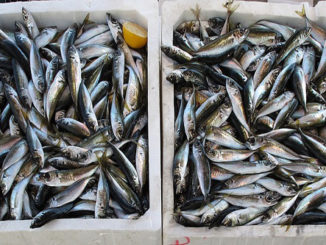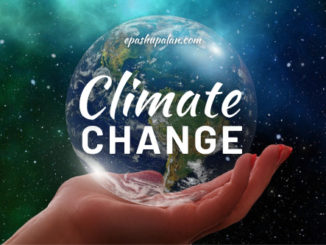Introduction
Aquaculture is making an increasing contribution to global production of fish, crustaceans and molluscs and thereby to the livelihoods, food security and nutrition of millions of people. Climate change poses new challenges to the sustainability of fisheries and aquaculture systems, with serious implications for the 520 million people who depend on them for their livelihoods and the nearly 3 billion people for whom fish is an important source of animal protein. Two-thirds of all reefs are in developing countries, and 500 million people in the tropics depend heavily on reefs for food, livelihoods, protection from natural disasters and other basic needs. Climate changes may affect fisheries and aquaculture directly by influencing fish stocks and the global supply of fish for consumption, or indirectly by influencing fish prices or the cost of goods and services required by fishers and fish farmers. Climate change lowers water quality causing more disease and increased competition with other water users which altered and reduced freshwater supplies with greater risk of drought. Fishing communities that depend on inland fisheries resources are likely to be particularly vulnerable to climate change. Higher inland water temperatures may reduce the availability of wild fish stocks by harming water quality, worsening dry season mortality, bringing new predators and pathogens, and changing the abundance of food available to fishery species. According to the Intergovernmental Panel on Climate Change (IPCC), climate change refers to a change in the state of the climate that can be identified by changes in the variability of its properties, and that persists for an extended period, decades or longer. Climate change may be due to natural internal processes or external forcing such as modulations of the solar cycles, volcanic eruptions and persistent anthropogenic changes in the composition of the atmosphere (e.g. greenhouse gases) or in land use.

Effects of climate change on aquaculture: drivers, impacts and policies
Although capture fisheries continue to play a major role in the livelihood, food security and nutrition of millions around the world, most global aquatic products now come from aquaculture. By supplying an increasing amount of fish, crustaceans and molluscs, the sector not only contributes to meet growing demand for the foreseeable future, but also helps dampen price rises. It is thus paramount that we understand the likely interactions between climate change and aquaculture – for both mitigation and adaptation – and help to build resilience and adaptation, especially among the many small-scale practitioners who still account for most of the production by the sector.
Positive impacts of climate change
- Enhanced primary productivity & benefit production of filter feeders
- Increased metabolic rate, feed conversion & growth rate
- Extended growth season
- Low winter mortality
- Faster growth rate in cooler regions/ higher latitudes
Negative impacts of climate change
- Temperature rise: Sea surface and inland water
- Thermal stress
- Algal bloom formation produces harmful toxins
- Reduced dissolved oxygen levels
- Changes in spawning patterns
- Stock loss (fish kill/ mortality)
- Reduced water quality
- Prevalence of pest, diseases and predators
- Consumer safety issues
- Water stress:
- Reduced water availability
- Reduces of freshwater inflow
- Enhanced evaporation rate/ Salinity rise
- Conflicts over water
- Less volume/ carrying capacity
- Reduced culture period
- Sea level rise:
- Flooding or low-lying areas
- Salinization of underground water
- Loss of farming sites
- Threat to freshwater aquaculture
- Upstream movement of saline water in rivers
- Loss of livelihood opportunity
Environmental monitoring systems
Although fisheries and aquaculture are sensitive to sudden climate changes and climatic variability (as well as to long-term trends and changes) there are very few examples worldwide of integrated monitoring systems providing information and interpretation of the information that small-scale fishers and fish farmers can trust and use to make decisions. For example, temperature changes can trigger disease in farmed aquatic products and sudden water movements or internal circulation can bring anoxic water to the surface or trigger toxic algal blooms. Changes in pH or salinity can also affect farmed fish survival, growth and production, while changes in monsoon and rain patterns can influence freshwater delivery, with sudden floods or droughts.
Monitoring programmes for toxins in shellfish were being conducted in more than 50 countries. The detection of dangerous levels of (harmful algal bloom) HAB toxins in shellfish leads to harvesting restrictions to prevent contaminated products from entering the market. Monitoring of other variables relevant to aquaculture is much less common. Adequate monitoring and early warning can facilitate mitigation strategies, such as early harvesting or relocation of fish net pens from sites of intense HABs. Other events that could be prevented or mitigated include extensive anoxic events affecting fish farming in lakes. Such events can be caused by certain winds and changes in temperature that facilitate upwelling of anoxic hypolimnetic waters. Monitoring of DO and temperature, especially the latter, can facilitate the identification of colder and deeper water masses that can generate such events. Another common threat is the sudden rise in water levels during extreme monsoons or heavy rain events that can damage fish and shrimp ponds. The monitoring of environmental variables such as DO and water transparency can also indicate excessive nutrient output from farms that could exacerbate the effects of climate variability on farmed fish.
Adaptation of fisheries to climate change
Adaptation can be planned or autonomous (i.e. spontaneous reaction to environmental change or planned action based on climate-induced changes). Autonomous adaptation in fisheries may be hanging the timing or locations of fishing as species arrive earlier/later or shift to new areas. Planned adaptation in fisheries may be research funding for finding species resistant to salinity and temperature fluctuations for aquaculture.
Adaptation to climate change is defined in the climate change literature as an adjustment in ecological, social or economic systems, in response to observed or expected changes in climatic stimuli and their effects and impacts in order to alleviate adverse impacts of change, or take advantage of new opportunities. In other words, adaptation is an active set of strategies and actions taken by people in reaction to, or in anticipation of, change in order to enhance or maintain their well-being. Adaptation can therefore involve both building adaptive capacity to increase the ability of individuals, groups or organizations to predict and adapt to changes, as well as implementing adaptation decisions, i.e. transforming that capacity into action. Both dimensions of adaptation can be implemented in preparation for, or in response to impacts generated by a changing climate.
Vulnerability and resilience
Vulnerability has become a key concept in the climate change literature. It is defined as the susceptibility of groups or individuals to harm as a result of climatic changes. Vulnerability is often compounded by other stresses and recognizes that the way in which people and systems are affected by climate change is determined by external environmental threats, internal factors determining the impact of those threats and how systems and individuals dynamically respond to changes. The vulnerability of an individual, community or larger social group depends on its capacity to respond to external stresses that may come from environmental variability or from change imposed by economic or social forces outside the local domain. Vulnerability is complex and depends on a combination of natural and socio-political attributes and geography. Non-climate factors such as poverty, inequality, food insecurity, conflict, disease and globalization can increase vulnerability by affecting the exposure, sensitivity and adaptive capacity of systems, communities and individuals. Resilience is a concept that is related to vulnerability and adaptive capacity. It has increasingly been applied to the management of linked social-ecological systems (SES) such as fisheries. Resilience is usually applied with an explicit recognition that SES are “complex systems” resulting in uncertain and surprising behaviours including path dependence, alternative stable states, thresholds and periods of apparent stability punctuated by rapid shifts to qualitatively different behaviours.






Be the first to comment